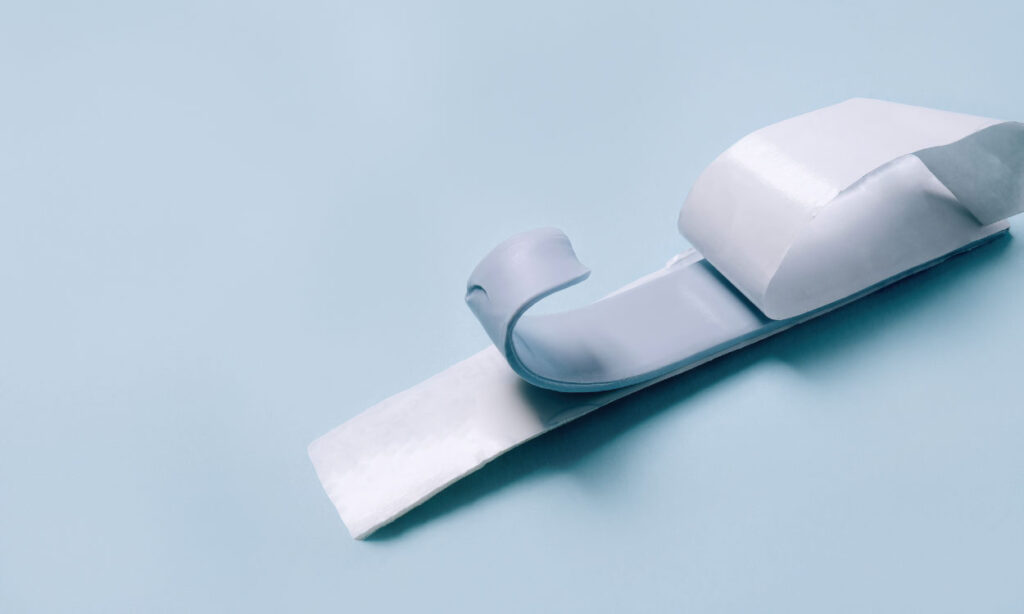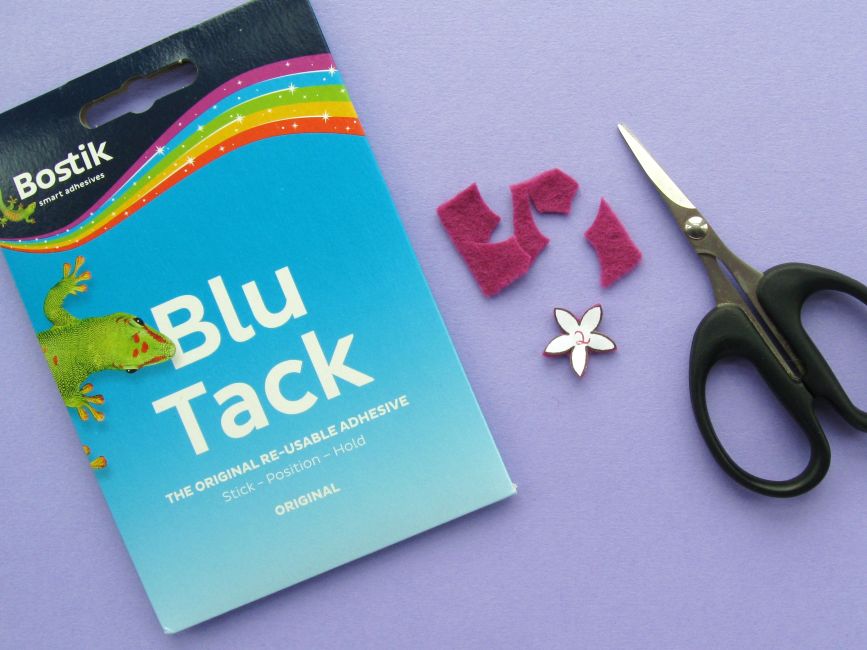Choosing between White Tack and Blu Tack depends on your specific needs. White Tack is known for its strong adhesion, making it ideal for heavier items on walls. However, it may leave a slight residue.
On the other hand, Blu Tack is versatile, easy to remove, and leaves minimal residue, but it may not support heavy items as well as White Tack.
If you have lightweight items or want easy removal, Blu Tack might be the better choice. For heavier items requiring strong adhesion, White Tack is the way to go. Consider your wall type, the weight of the items, and your preferences for the best choice.
What is White Tack?

White Tack, also known as white adhesive putty, is a pliable and versatile adhesive substance. Composed of a synthetic rubber-based compound, it possesses a tacky consistency that allows it to adhere to various surfaces. Its white color makes it blend seamlessly with light-colored walls.
White Tack is malleable and easy to manipulate, allowing users to shape it according to their needs.
Common Uses on Walls
White Tack finds widespread application on walls for hanging lightweight objects such as posters, photographs, and artwork. Its ability to adhere without causing damage to surfaces makes it suitable for temporarily decorating walls in homes, offices, or classrooms. Users often choose White Tack for its ease of use and flexibility in arranging wall displays.
Pros and Cons of White Tack
Pros
- Strong Adhesion: White Tack offers robust adhesion for securing items on walls.
- Removability: It can be easily removed without causing damage to walls or leaving noticeable residue.
- Versatility: Suitable for various lightweight objects and adaptable to different wall surfaces.
Cons
- Not Suitable for Heavy Items: White Tack may not provide adequate support for heavier items.
- Residue Risk: While minimal, there is a slight risk of leaving residue on walls, especially with prolonged use.
What is Blu Tack?
Blu Tack, a popular reusable adhesive, is a distinctive blue putty-like substance made from a synthetic rubber compound. Its pliable nature allows users to shape it easily.
Blu Tack is renowned for its non-toxic and non-staining properties. Unlike White Tack, its blue color makes it easily distinguishable on walls.
Common Uses on Walls
Blu Tack is widely used on walls for various applications. It excels in affixing lightweight objects such as posters, notes, and decorations. Its versatility extends to creating temporary displays and arrangements without causing damage to surfaces. Blu Tack is favored for its ease of removal and ability to be reused multiple times.
Pros and Cons of Blu Tack
Pros
- Reusable: Blu Tack can be reused, making it a cost-effective and sustainable option.
- Clean Removal: It leaves minimal residue on walls, ensuring a clean and undamaged surface.
- Versatile: Suitable for a wide range of lightweight items and compatible with most wall surfaces.
Cons
- Limited Strength: Blu Tack may not provide sufficient support for heavier items.
- Color Staining Risk: While rare, there is a slight risk of color transfer or staining, especially on porous surfaces.
Key Differences
| Feature | White Tack | Blu Tack |
| Stickiness and Adhesion | High stickiness, strong adhesion for heavier items | Moderate stickiness, suitable for lightweight objects |
| Removability and Residue | Clean removal with slight residue risk | Excellent clean removal with minimal to no residue |
| Color and Appearance | White color, discreet on lighter walls | Distinctive blue color, easily identifiable, lower staining risk |
Which is Best for Your Wall?

The best adhesive for your wall depends on factors like the wall type and the weight of the item you want to hang. If you need strong adhesion for heavier items, go for White Tack; if you prefer easy removal and reuse for lighter items, choose Blu Tack.
Factors to Consider
Wall Type
When choosing between White Tack and Blu Tack, consider the type of wall surface. White Tack and Blu Tack both work well on painted walls; however, if your walls have unique finishes or are highly textured, Blu Tack’s clean removal may be more suitable. White Tack’s stronger adhesion might be preferable for smoother surfaces.
Weight of the Item to be Hung
The weight of the object you intend to hang is crucial. White Tack is generally better for heavier items due to its strong adhesion. If you’re hanging lightweight items, Blu Tack may be sufficient and offers the advantage of clean removal.
Personal Preferences and Experiences
Consider your personal preferences and past experiences with adhesives. If you prioritize ease of removal and reusability, Blu Tack might align better with your preferences.
On the other hand, if you value strong adhesion for more substantial items, White Tack may be the preferred choice.
Recommended Scenarios for Each Tack
White Tack
- Best for heavier items such as framed pictures or larger decorations.
- Ideal for situations where strong adhesion is necessary.
- Suitable for individuals who prioritize a secure hold over easy removal.
Blu Tack
- Recommended for lightweight items like posters, notes, or temporary decorations.
- Suitable for users who prefer a cleaner removal process and the option to reuse the adhesive.
- Ideal for situations where the wall surface needs to remain undamaged.
FAQ
Does Blu Tack stain white walls?
No, Blu Tack generally doesn’t stain white walls. Its low staining risk ensures a clean removal, leaving the wall surface undamaged.
Is White Tack toxic?
No, White Tack is not toxic. It is made from synthetic rubber compounds that pose no harm when handled properly.
Is it OK to chew Blu Tack?
No, chewing Blu Tack is not recommended. While non-toxic, it’s not designed for ingestion, and accidental swallowing should be avoided.
Is Blu Tack safe for skin?
Yes, Blu Tack is generally safe for skin contact. It’s non-toxic, but extended contact may cause mild irritation for some individuals.
What’s Blu Tack made of?
Blu Tack is made of a synthetic rubber compound, providing its distinctive adhesive and pliable properties for versatile use.
Is White Tack flammable?
No, White Tack is not flammable and poses no significant fire hazard. It can be used safely in various environments.
How strong is Blu Tack?
Blu Tack exhibits moderate strength, making it suitable for affixing lightweight items on walls. For heavier objects, White Tack may provide stronger adhesion.
Does Blu Tack expire?
No, Blu Tack does not have a specific expiration date. When stored properly, it remains usable for an extended period, maintaining its adhesive properties.
Can Blu Tack freeze?
Yes, Blu Tack can withstand freezing temperatures without losing its effectiveness. However, allowing it to return to room temperature before use is recommended.
Is Blu Tack waterproof?
No, Blu Tack is not completely waterproof. While it can resist moisture to some extent, prolonged exposure to water may compromise its adhesive strength.
Final thoughts
Choosing between White Tack and Blu Tack depends on what you need for your walls. If you have heavier items, White Tack’s strong grip might be best. For lighter things and easy removal, Blu Tack is a great choice.
Consider your preferences, wall type, and what you’re hanging to pick the one that suits you.
Whether it’s White Tack or Blu Tack, both are handy for making your walls uniquely yours.

